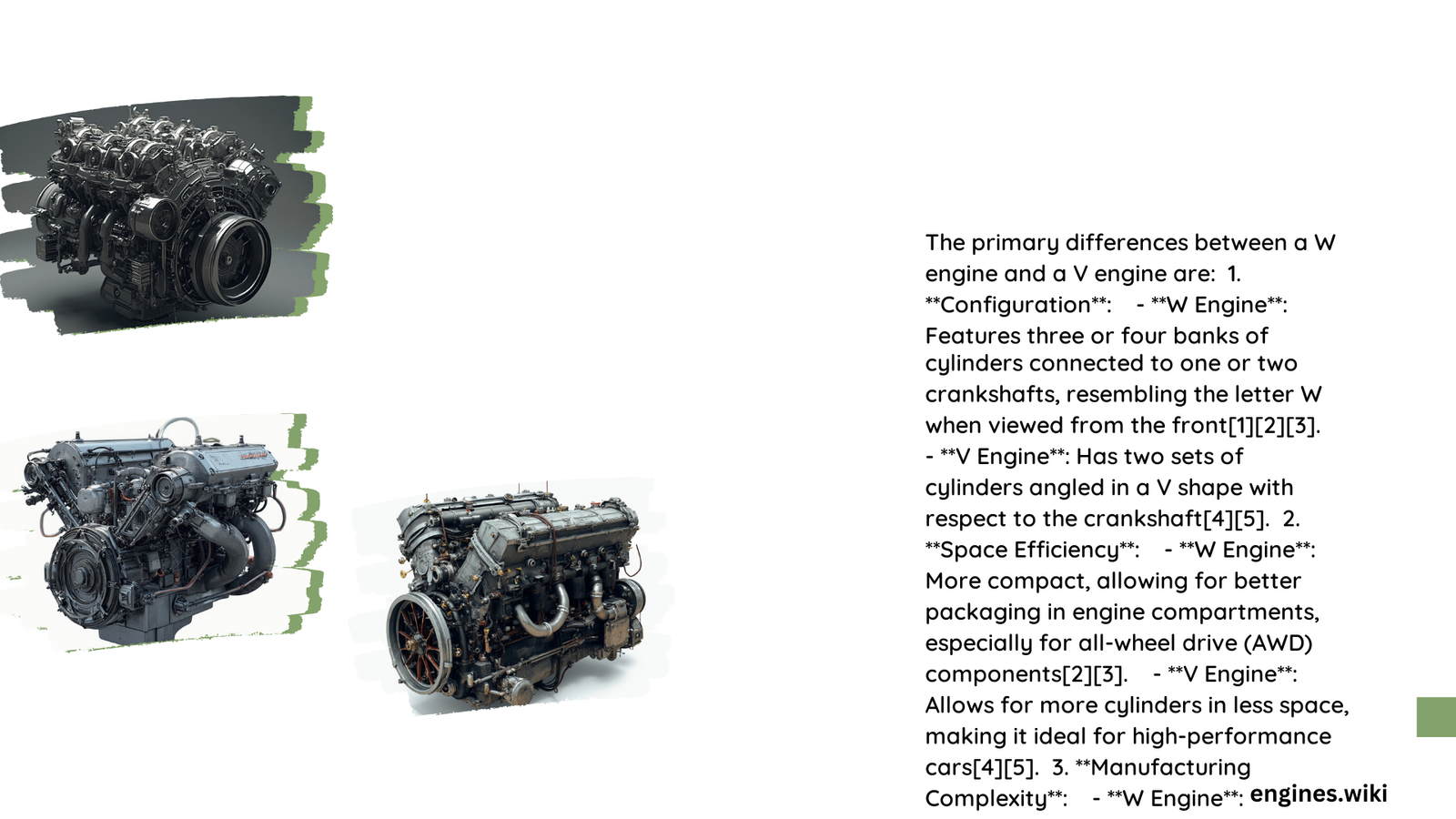What’s the Difference Between a W and V Engine: Technical Insights and Comparative Analysis
Engine Configuration Overview
Modern automotive engineering presents two fascinating engine configurations that challenge traditional design principles: W and V engines. These complex powerplants represent innovative approaches to maximizing performance, compactness, and power output in high-end vehicles. Understanding their fundamental differences reveals intricate engineering solutions that push the boundaries of automotive technology.
How Do W and V Engines Differ in Basic Design?
W engines represent a unique cylinder arrangement resembling the letter W, typically combining multiple VR engine banks at specific angles. In contrast, V engines feature two cylinder banks arranged at a V-shaped angle. Key design differences include:
Cylinder Arrangement Comparison
| Engine Type | Cylinder Configuration | Typical V-Angle | Common Applications |
|---|---|---|---|
| W Engine | Multiple banks forming W shape | 15-72 degrees | Luxury/Exotic Cars |
| V Engine | Two banks in V formation | 60-90 degrees | Sports/Performance Vehicles |
What Makes W Engines Unique in Mechanical Architecture?
W engines distinguish themselves through:
– Compact external dimensions
– Higher cylinder count (W8, W10, W12, W16)
– Complex internal geometry
– Shorter overall length compared to equivalent V engines
How Do Performance Characteristics Vary?
Performance metrics reveal significant distinctions:
W Engine Performance Highlights:
– Extremely high horsepower potential
– Compact power density
– Example: Bugatti Veyron’s W16 produces over 1,000 horsepower
V Engine Performance Characteristics:
– More traditional design
– Widely varied power outputs
– Easier to manufacture and maintain
– Typical configurations from V4 to V12
What Are the Fuel Efficiency Implications?
Fuel consumption varies dramatically between these engine types:
- W Engines
- Generally lower fuel efficiency
- Higher complexity increases consumption
-
Estimated 8-15 MPG in performance vehicles
-
V Engines
- More predictable fuel economy
- Better efficiency in standard configurations
- Typical range: 20-40 MPG depending on design
Why Do Maintenance Challenges Differ?
Maintenance Complexity Factors:
– W Engines
– More intricate component arrangement
– Higher specialized repair costs
– Limited accessibility
- V Engines
- More standardized design
- Easier component replacement
- Lower maintenance expenses
What Technical Innovations Define These Engines?
Both engine types represent significant engineering achievements:
– W Engines: Pioneered by Volkswagen Group
– V Engines: Developed across multiple manufacturers
– Both demonstrate advanced metallurgy and precision manufacturing
Practical Considerations for Vehicle Selection
Choosing Between W and V Engines:
– Performance requirements
– Budget constraints
– Maintenance accessibility
– Intended vehicle usage
Technical Nuances in Manufacturing
The manufacturing process for W engines requires:
– Advanced casting techniques
– Precision machining
– Complex assembly procedures
V engines offer:
– More straightforward production
– Lower manufacturing costs
– Greater design flexibility
Conclusion
While W and V engines represent different approaches to power generation, both showcase remarkable engineering prowess. The choice between them depends on specific performance, efficiency, and application requirements.

